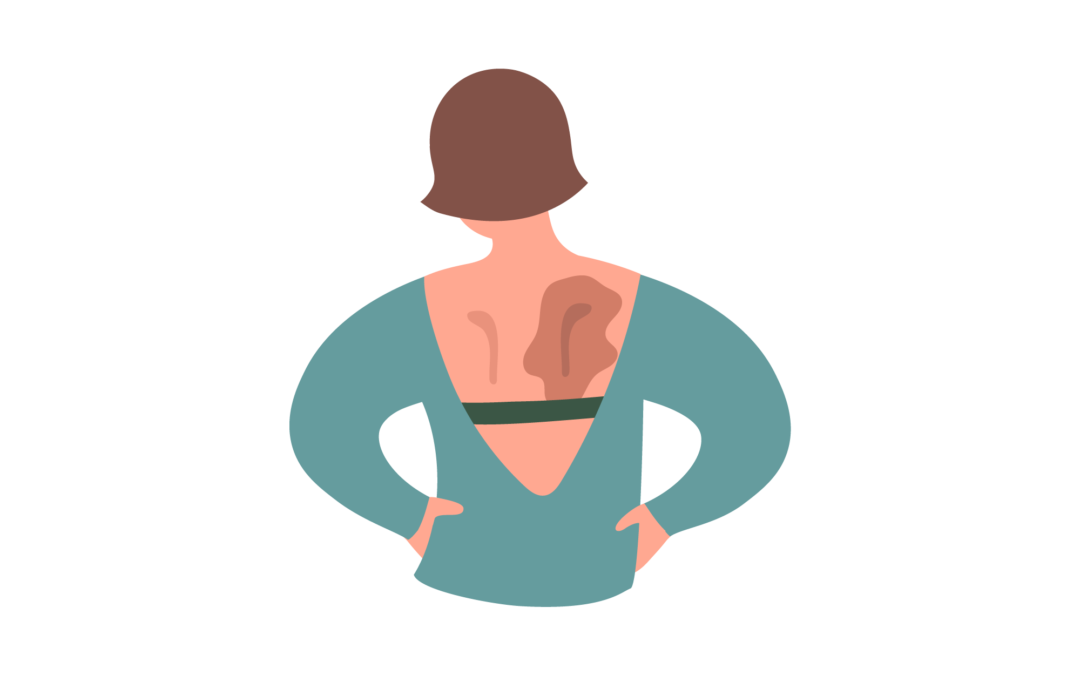Shoulder blade or scapular pain refers to the discomfort, aching or feeling sore between the shoulder blades. It may get intense during certain daily life activities such as lifting an arm to any object, turning your head sideways, etc.
If it happens to you occasionally, then there is nothing to worry about as it’ll go away on its own. However, if shoulder blade pain is occurring more frequently, it might signal a serious health issue.
To prevent serious health issues, let’s identify the cause of your shoulder pain and look into its relief methods and prevention tips.
Causes
There’s a number of reasons that you may experience shoulder pain. But you can identify the leading cause as it gets noticeable while performing certain activities in your daily life. Some of them may include:
1. Heavy Lifting
Sometimes heavy lifting causes certain muscles of your shoulder to feel intense pressure, and your body reacts to it by a spiking pain on your shoulder blade. It may even cost you not lifting a heavy object for a very long time.
It is recommended to see a doctor if the pain prolongs. It’ll help you to avoid worsening your shoulder’s muscle strains or tearing.
2. Poor Posture
If you have a sedentary lifestyle, long working hours while sitting in one place, or sleeping in an uncomfortable position, you are bound to have shoulder pain due to poor posture.
Poor posture makes your muscles static that cause you discomfort, and eventually, you begin to feel pain in your back and shoulder blades. You may also feel pain due to bad posture while sleeping, leading to static muscles.
3. Muscle Overuse, Injury Or Fracture
You might experience shoulder blade pain due to the kind of activities you do. If you are a sporty person or your job requires physical labour, you might feel pain because of the overuse of the rotator cuff.
While other reasons may include any scapular injury or fracture that have caused trauma during some accident, leaving intense pain whenever your shoulder muscles are active.
4. Signs Of Severe Medical Conditions
However, shoulder blade pain may be a warning for severe medical conditions, such as:
- Degenerative disc – Related to aged conditions that deteriorate spine.
- Herniated disc – A disk in the spine ruptures, slips or cracks.
- Scoliosis – Sideways curves in the spine that may happen before reaching puberty.
- Osteoarthritis – Arthritis occurs when flexible tissue in your bones wears down, usually in the joints around your neck, spine, or ribs.
- Spinal stenosis – Puts pressure on the spinal cord along the nerves within.
- Acid reflux – Heartburn, pancreatitis or peptic ulcer.
- Fibromyalgia – Pain muscles accompanied by sleep, fatigue, memory loss and mood swing issues.
- Shingles – A chickenpox virus, causing painful rashes and shoulder pain.
- Myofascial pain syndrome (MPS) – Muscles pain due to its overuse.
- Certain cancers – Such as lung cancer, bone cancer, or other cancers spread to bones and near shoulder blades.
- Nerve compression syndrome – Direct pressure on the nerves on or around the shoulder blade.
- Heart attack or other diseases – Sudden spike recurrent pain in the shoulder blade, especially among women.
- Gallstone – Stones in the gallbladder, often followed by pain in the upper right part of abdomen and nausea.
- Thoracic aorta rupture – Aortic dissection due to the blood surges through the inner and middle layers of the aorta, causing it to separate and tear blood vessels near your heart.
- Pulmonary embolism – Blood clot breaks free and enters into lungs, causing a decrease in oxygen level and permanent damage.
- Other accompanying signs – Such as chest pain, shortness of breath, excessive sweating, swelling in your legs, coughing up blood, fever, sudden vision loss, speaking difficulty, losing conscious or irregular heartbeat may also occur.
All of these signs indicate severe and severe medical conditions that are life-threatening. You must seek emergency treatment from a doctor if you experience any of these symptoms.
Shoulder Blade Pain Relief Options
If your pain is not frequent and bearable, then it might be chronic shoulder blade pain, and you might be able to treat it without getting any emergency treatment.
After making sure that your condition is not one of the warning signs of any serious medical condition, you can follow some of the shoulder blade pain relief techniques, which are:
1. Exercise
Exercises can help you strengthen, relax your back muscles, and ultimately relieve you from shoulder blade pain. Physical activity such as stretching improves blood circulation to your muscles and joints, which often provides pain relief.
One of the top and easiest exercises that you perform at home are arm stretches. You may cross one arm over your body, use the other arm to grab and pull your outstretched arm from the elbow toward your chest, then hold this stretch for about five to ten seconds. However, you can also look into other exercises or ask your physician about them.
2. Diet and Routine
Some processed foods, such as high-fructose sugar, artificial trans fats, refined carbohydrates, or processed meat, could cause inflammation, making your symptoms worse. Try to eat plenty of fruits and vegetables that are high in omega-3 fatty acids to avoid inflammation.
Sometimes all you need is to rest to recover from your shoulder blade pain, especially if you have an injury or a fracture due to some accident.
3. Hot or Cold Compresses
Applying hot or cold compresses on your tight or tense shoulder blade for about ten to fifteen minutes could help you to relieve discomfort and pain. You can keep the compresses till the swelling or pain is reduced.
Compresses are generally good techniques to relax muscles, but be careful as the temperature may vary depending on your applying environment.
4. Massage Or Occupational Therapy
If the pain is caused due to the overuse of muscles or joints, then a massage therapist can work on the problem areas to relax muscle tissue.
However, you might need to see an occupational therapist if you have an injury on your shoulder blade, as it will require certain exercises to relieve you from your shoulder pain.
5. Medications
Medications such as ibuprofen and paracetamol are prevalent for short time pain relieves. Sometimes, anti-inflammatory or anti-depressants are also recommended by doctors depending on your health conditions.
In some cases, doctors may prescribe pain killer injections or pills to reduce your shoulder blade pain. However, every drug has its limitations, so do not take any medication without consulting your doctor.
6. Surgery
If you are experiencing severe pain and no other treatment works for your shoulder blade pain, then there is a chance that your shoulder may be imbalanced and requires surgery to adjust the position of the scapula.
However, most Orthopaedic Surgeons first recommend nonsurgical options for their patients. Also, conducts few tests to confirm the root cause of the pain. Then they proceed with the surgery of your shoulder blade.
Prevention Tips For Shoulder Blade Pain
Aside from knowing the cause and treatment options, few practices can help you avoid or reduce your shoulder blade pain.
A few of them are:
- A healthy diet and physical activity – Take a healthy diet that strengthens your bones and doesn’t cause inflammation. Make sure that your diet food must contain the necessary amount of vitamin D and calcium.
- Practice proper posture – Avoid slouching, leaning, or uncomfortable posture. Use special pillows for your back to sit tall and straight when working. It will help your neck and spine alignment.
- Avoid lifting heavy items – Don’t carry heavy weight with your one shoulder as it may lead to injury and trigger intense pain on your shoulder blades. Still, if you need to do the heavy lifting, then be sure not to put too much pressure on your back and do it with proper posture while using both shoulders and bending knees.
- Change positions – Changing your position frequently helps you to avoid getting your muscles stiff. So stretch from time to time when you’re working for long hours in the same position. Also, try to sleep in a comfortable place to change your position with ease while sleeping.
- Follow healthy habits – Take complete rest, sleep at least seven to nine hours based on your age requirement. Avoid too much smoking and, if possible, quit it. Maintain a healthy lifestyle as it can help you avoid or manage your shoulder blade pain.
To Conclude
Most of the time, the shoulder blade pain is temporary due to our lifestyle choices. So, there is much we can do to prevent this pain.
Knowing the root cause of your shoulder blade pain will help you diagnose your health’s exact condition and avoid life-threatening medical situations. However, if the pain doesn’t go away with the mild treatment options, you must see a doctor for better health care.




Recent Comments